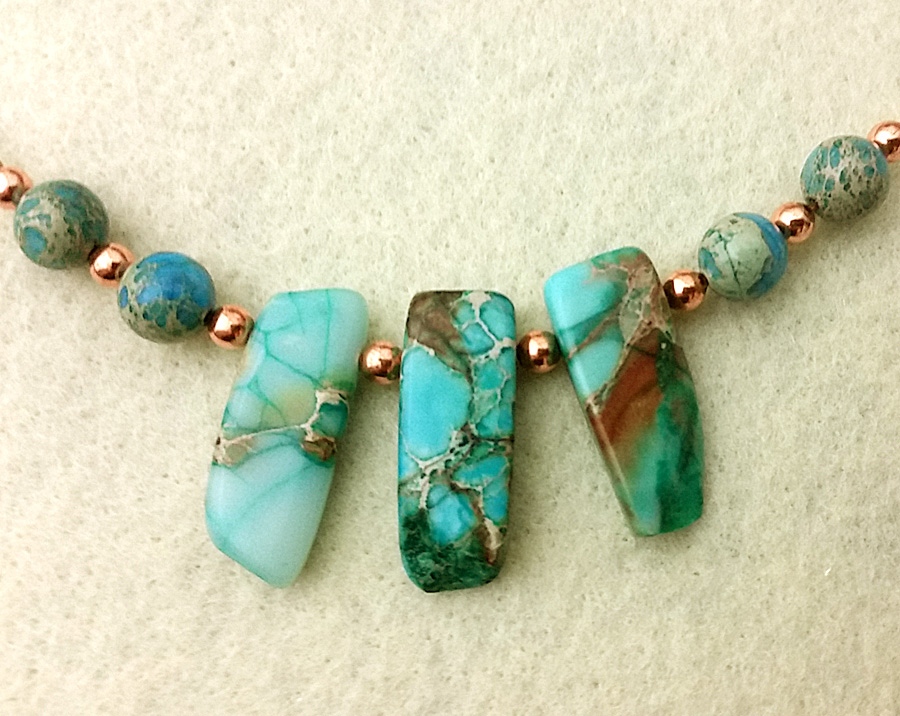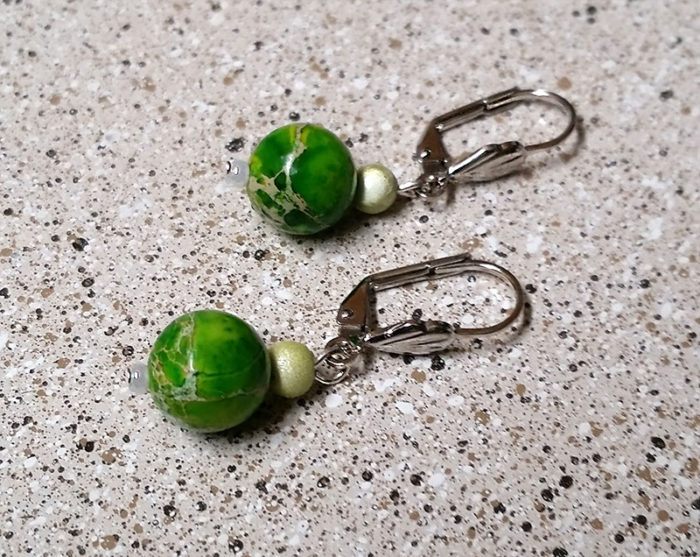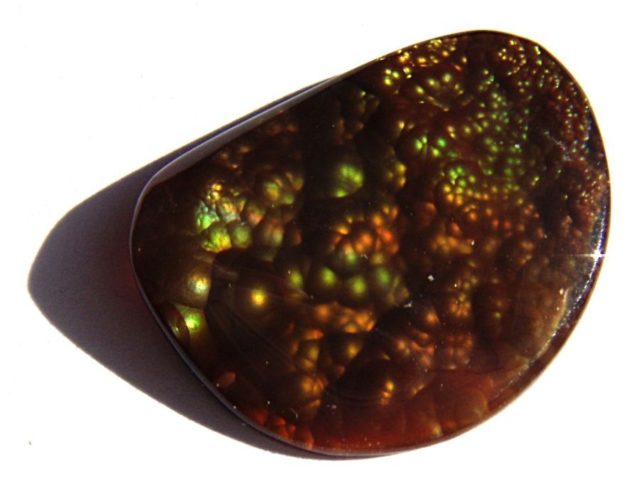Not long ago it was pointed out to me that my imperial jasper beads were actually synthetic stones and that the real imperial jasper looked nothing like them. What I have and love to work with is richly textured variations of these round beads:


I only know what they are called from stores’ or rock show sellers’ labels and spoken words. Indeed, those are sometimes inaccurate, but somehow it never occurred to me to look up more information about the popular stone that was invariably called “imperial jasper.”
So on I went on a quest to find out the difference between a true imperial jasper and whatever my beautiful beads were. To my surprise, finding out anything about my kind of imperial jasper was not easy at all.
First, I had to wander through a lot of rather unhelpful metaphysical information. For some reason Google put that at the top of every search query I could think of. My requests were becoming longer and more insistent on mineralogy and geology, and finally Google gave up and told me that the natural imperial jasper looked like this:

Along with the visual shock and amazement came the news that the real stone’s prices were much higher then even the most expensive and stunning varieties of what I thought the imperial jasper was.
That still left open the question about the nature of my own beads. I could not find any coherent, authoritative answer online, and that led me to believe that maybe manufacturing of this stone was some kind of a guarded secret. All I could find was guesses and conflicting statements:
- this is a sea sediment jasper made with small pieces of inexpensive textured stone held together by a binder
- pieces or both stones and binding materials are dyed for extra appeal
- it is also can be called impression jasper, sea sediment jasper, and emperor jasper
- this stone comes from China, Madagascar, and South Africa
I am not sure that “impression jasper” belongs in the list of names though. It seems to be a real stone, and its patterns of beige/tan web of veins are a bit different from those of imperial jasper.
What still remains unclear is whether my stone beads are synthetic. Some sources say that they are and also call this kind of jasper synthetic regalite. But then the same sources say things like “howlite is synthetic turquoise” and ruin their credibility. What is regalite, synthetic or natural, also remains a mystery.
I will revisit all this at a later time. I love digging for stone info. But right now and for a good number of weeks ahead of me there is custom jewelry to design and people’s treasured pieces to repair.
